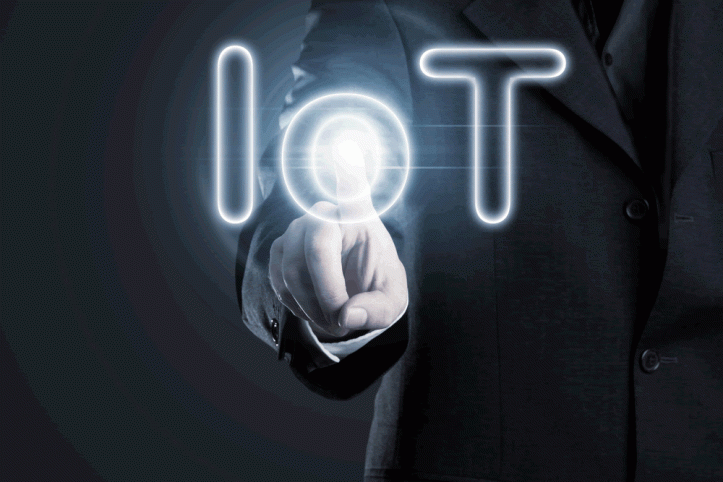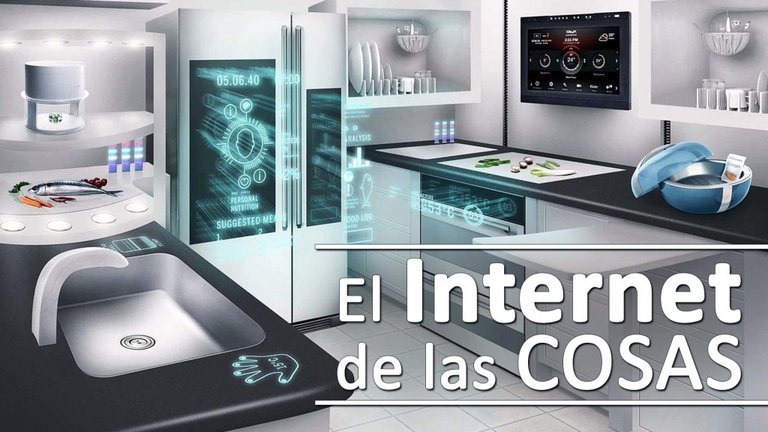The Internet of Things or IoT by its acronym in English, is nothing more than the connection of a daily object to the Internet, that is; that an object such as a pair of shoes can be, connect to the Internet automatically and save the information that has been collected in the cloud, so that the user of these shoes can see how much he has walked and done during his week.

As already mentioned above, the Internet of Things is the connection between a daily object and the Internet.
The reason why this concept is born is because almost all the information that exists on the Internet has been created by human beings and this is not something that is efficient from a certain perspective, therefore, the IoT objective is to prevent human beings from spending so much time creating information on the Internet and letting small chips take care of that work.
In this way, human beings will only have to see the results and stay with what really interests them, without the need to read long reports created by scientists, which often do not adapt to all people and is only functional for a small group.
Beginnings of IoT
The first time this concept was mentioned was in 1999, when Kevin Ashton carried out radiofrequency research for the Massachusetts Institute of Technology, however, it was not until 2009 that the necessary technology was created to make this concept a reality.
How does the Internet of things apply to everyday objects?
This is achieved through a system called RFID, which is inside a small chip, which is responsible for identifying all radio frequencies of that object.
The objects in which this technology can be applied are almost infinite, among them:
Slippers , to know how much you run during an exercise routine.
Toilets , which can examine the urine and recommend foods to improve the diet.
Furniture , to know how much time is spent sitting watching television or in front of the computer.
Basically, this technology can be applied to almost anything you imagine, although it is a concept that is still in development.
Although IoT is still not very popular, research says that by 2020, there will be an estimated 50,000 million objects that can be connected to the Internet using this technology.
There are even experts who say the following:
"When a person connects to the Internet, his life changes, but if all the things that exist connect to the Internet, the world will change"
In a nutshell; humanity is facing a huge information revolution, where everyone can research their routines and improve their lifestyle.

IoT a technology that brings humanity closer to the futuristic dream
Everyone with a certain age remembers those movies from the 90s, where the houses had a very advanced technology and everything was done automatically, without the need for human beings to be setting up teams, telling them what to do.
IoT, in a certain way, makes this dream come true, because it not only serves to gather the information of everyday objects, but also serves to control these objects at a distance, that is to say; If a person leaves the house and has forgotten to turn off the kitchen, he can enter his mobile device and control it remotely, as long as it is connected to the Internet.
In conclusion: through IoT, you can control virtually anything that belongs to you and everything, using your mobile device.
What are the problems of IoT?
There really are more benefits of IoT, than the problems that this technology can generate.
The main problem we have is privacy, because being all the information of a person in the cloud (more than what is currently available), will allow large corporations and governments, have access to it and in Most of the times, without the authorization of the person.
Another problem that has and currently affects most, is the high price, because manufacturers must make a greater investment in adding this technology and not being highly developed, manufacturing costs are considerably high.
This is one of the reasons why IoT has taken so long to develop, since the industries still do not make a massive investment in the area, considering it very advanced for the time.
However, by the end of 2017, there will be more than 8,400 million objects connected to the Internet, which makes clear that it is something that will grow over the years.
Nice
Peace, Abundance, and Liberty Network (PALnet) Discord Channel. It's a completely public and open space to all members of the Steemit community who voluntarily choose to be there.Congratulations! This post has been upvoted from the communal account, @minnowsupport, by jacksonmil980 from the Minnow Support Project. It's a witness project run by aggroed, ausbitbank, teamsteem, theprophet0, someguy123, neoxian, followbtcnews/crimsonclad, and netuoso. The goal is to help Steemit grow by supporting Minnows and creating a social network. Please find us in the
If you would like to delegate to the Minnow Support Project you can do so by clicking on the following links: 50SP, 100SP, 250SP, 500SP, 1000SP, 5000SP. Be sure to leave at least 50SP undelegated on your account.